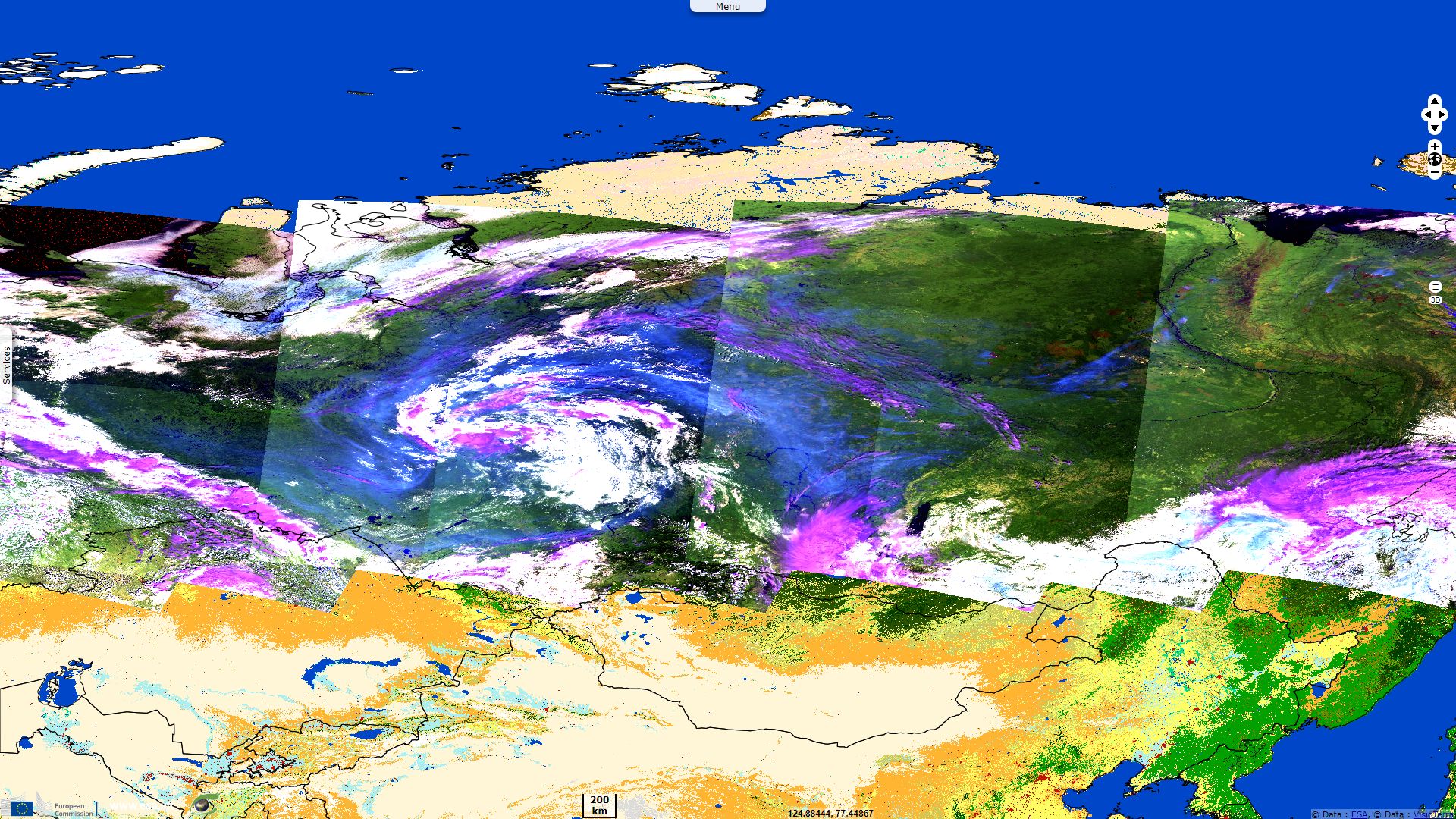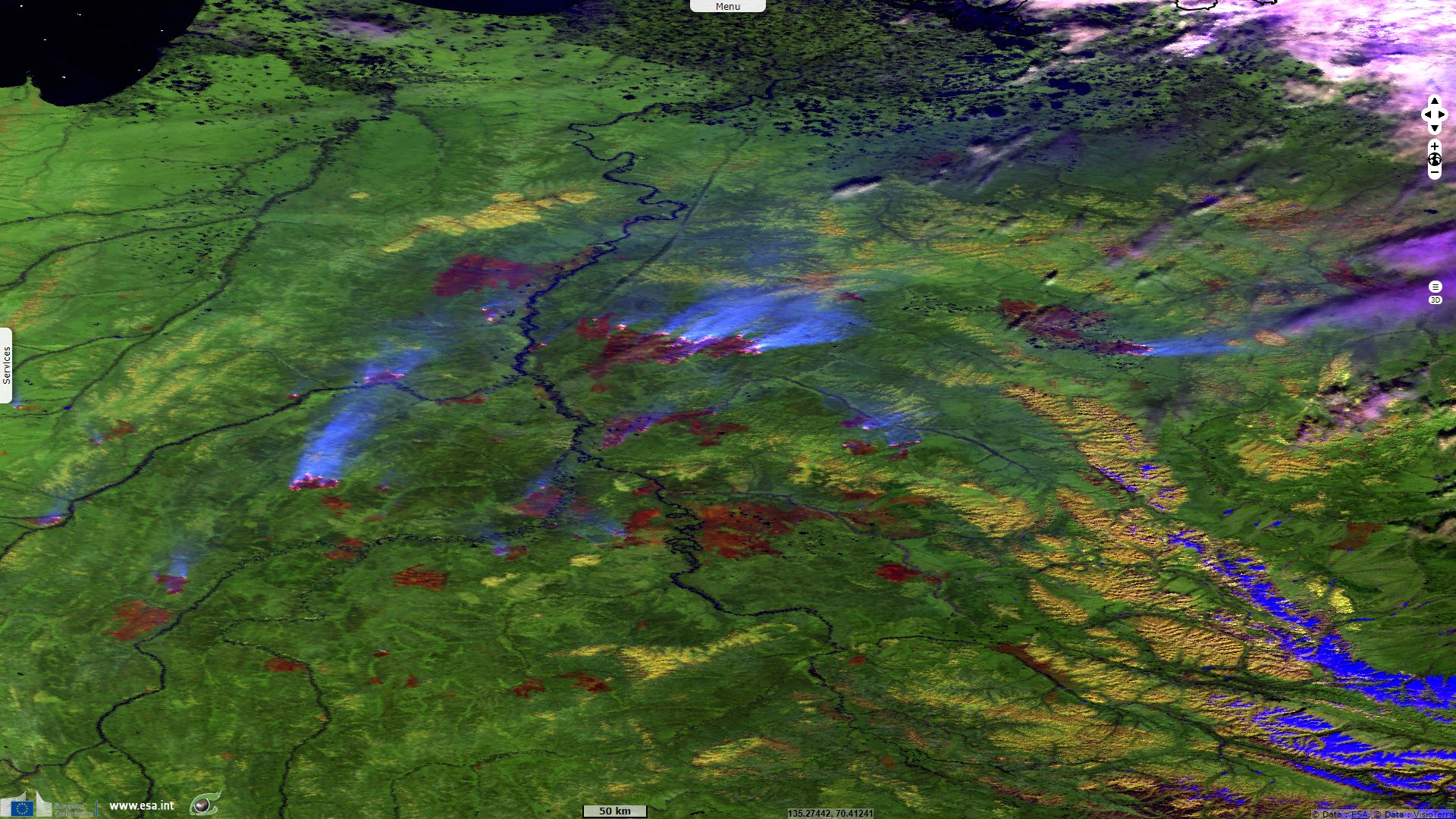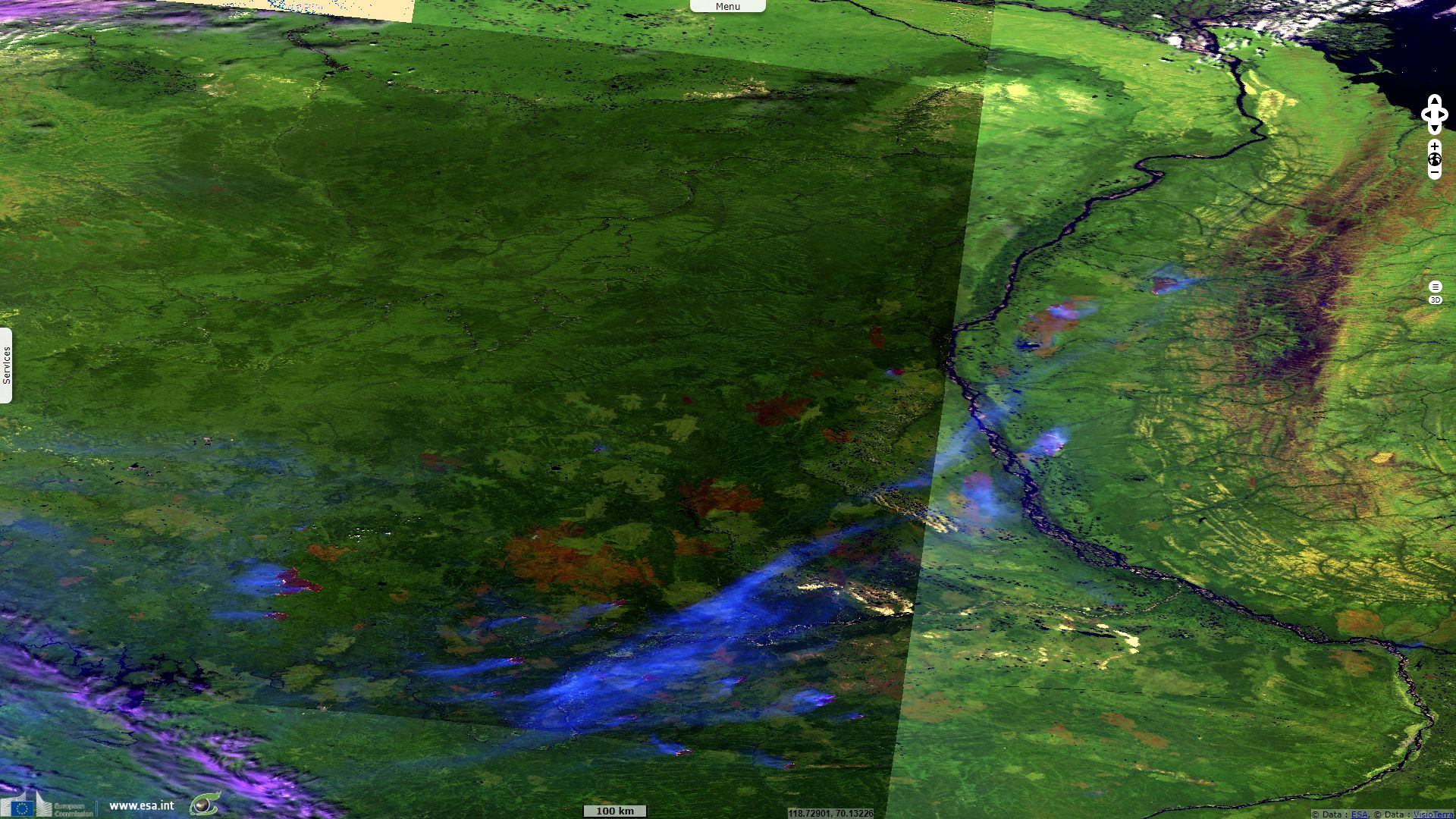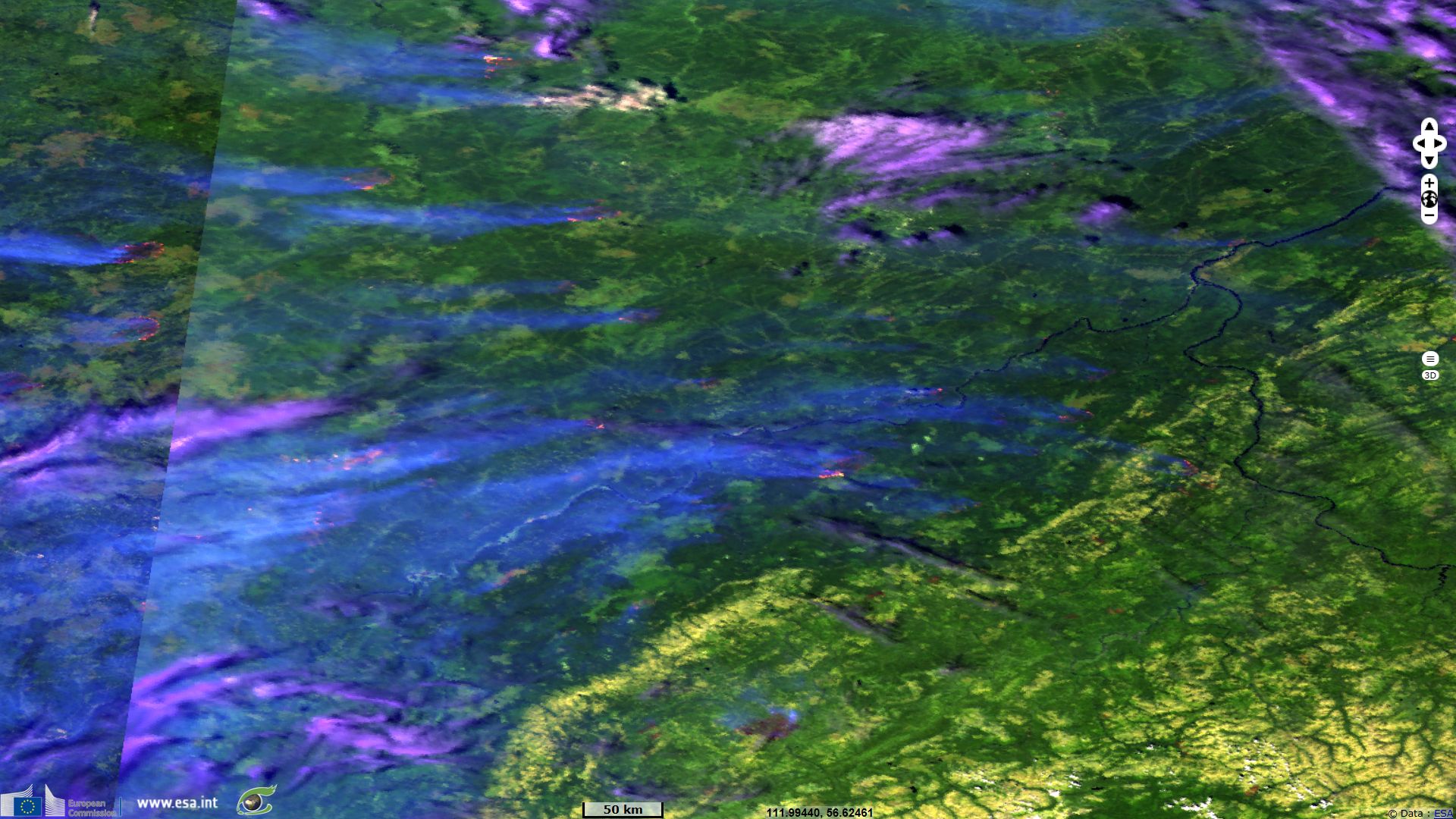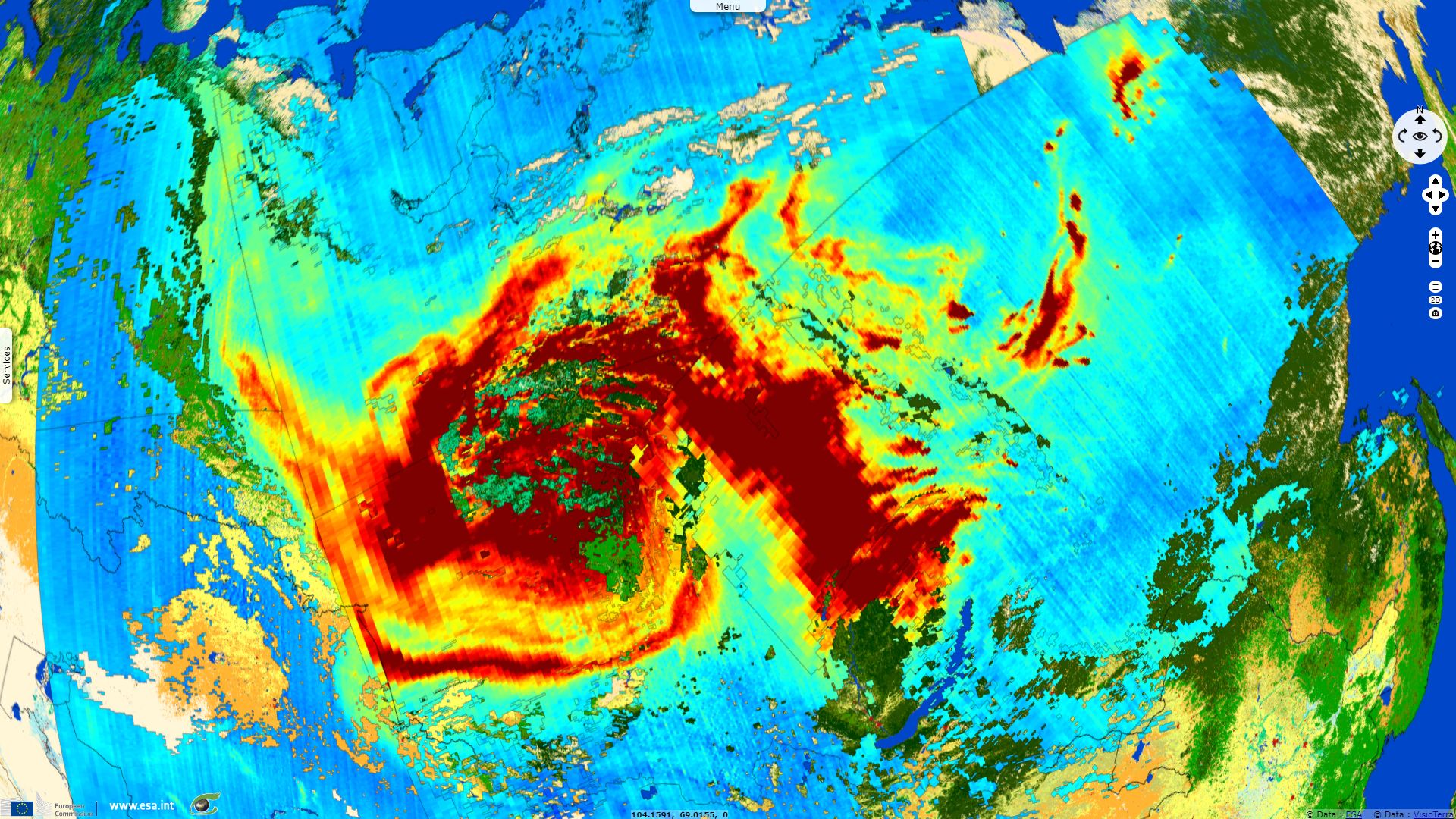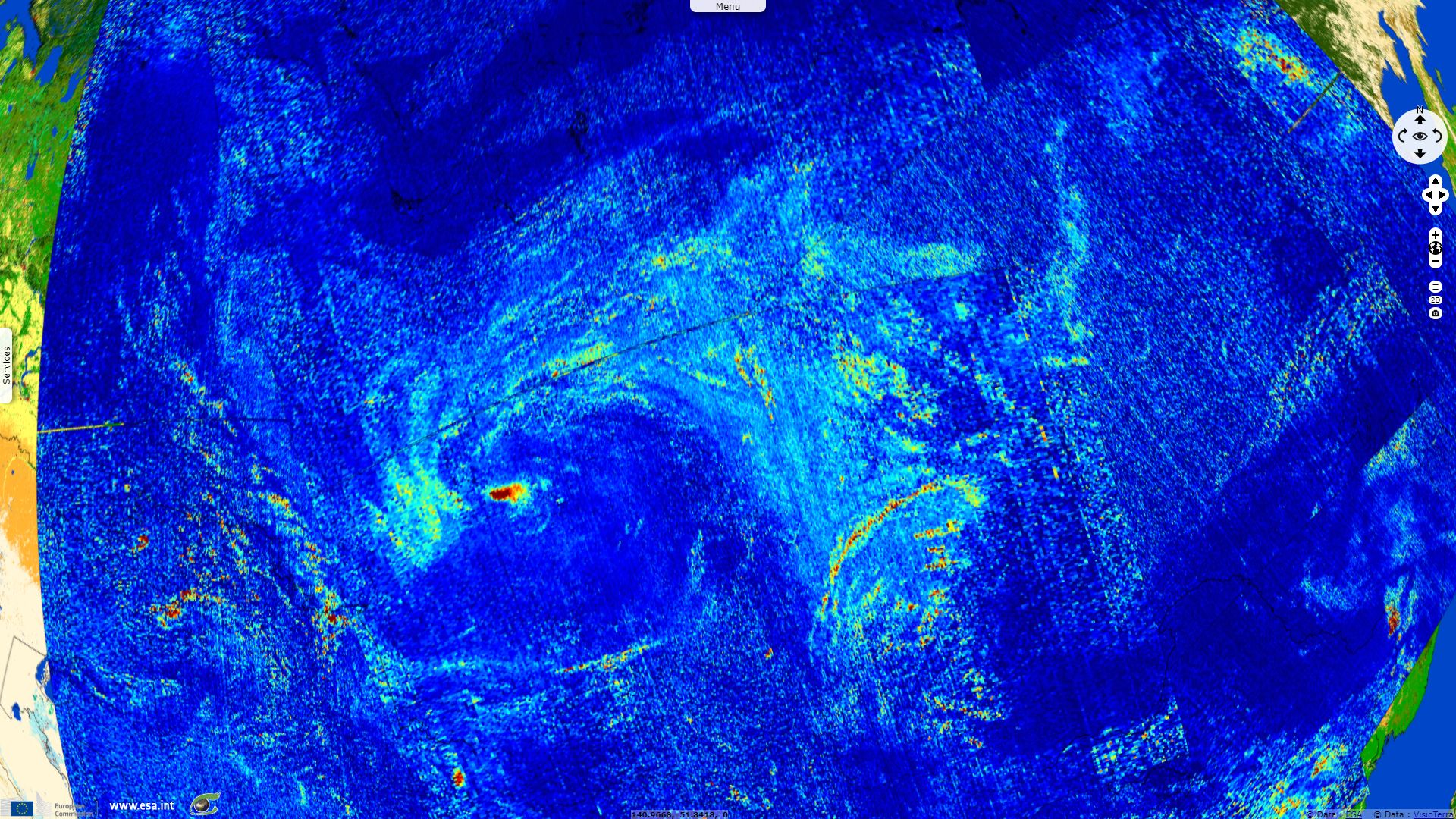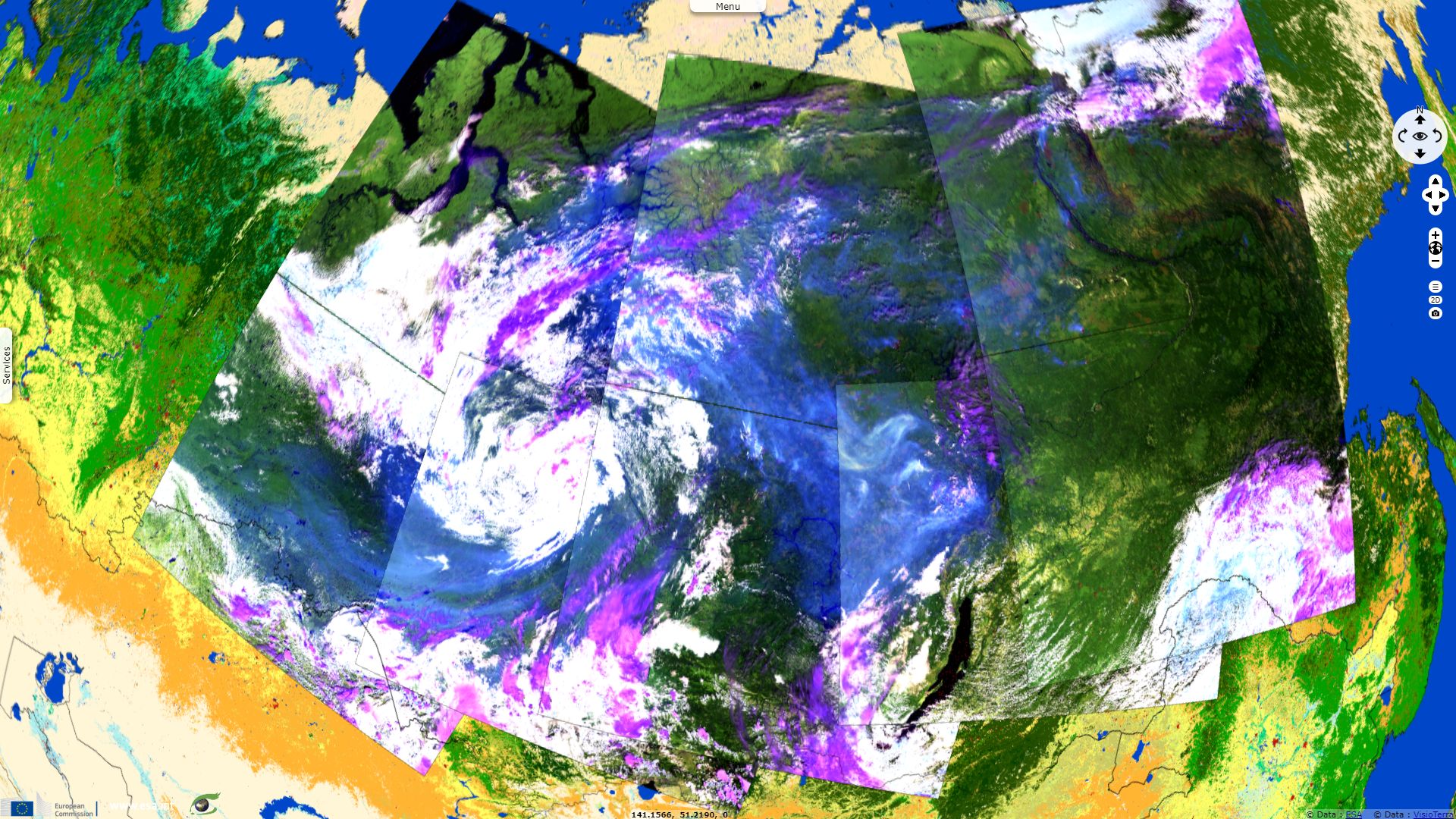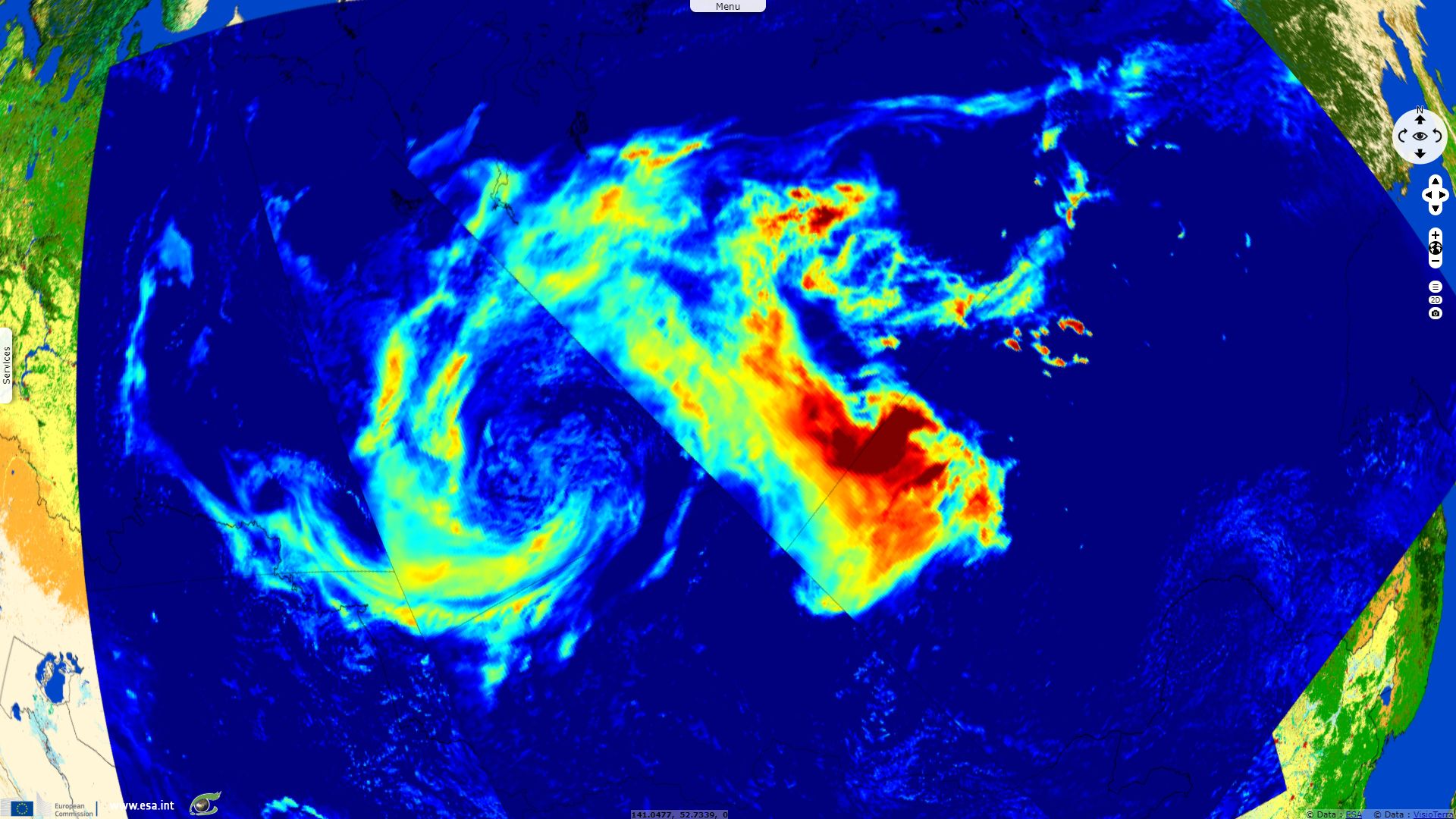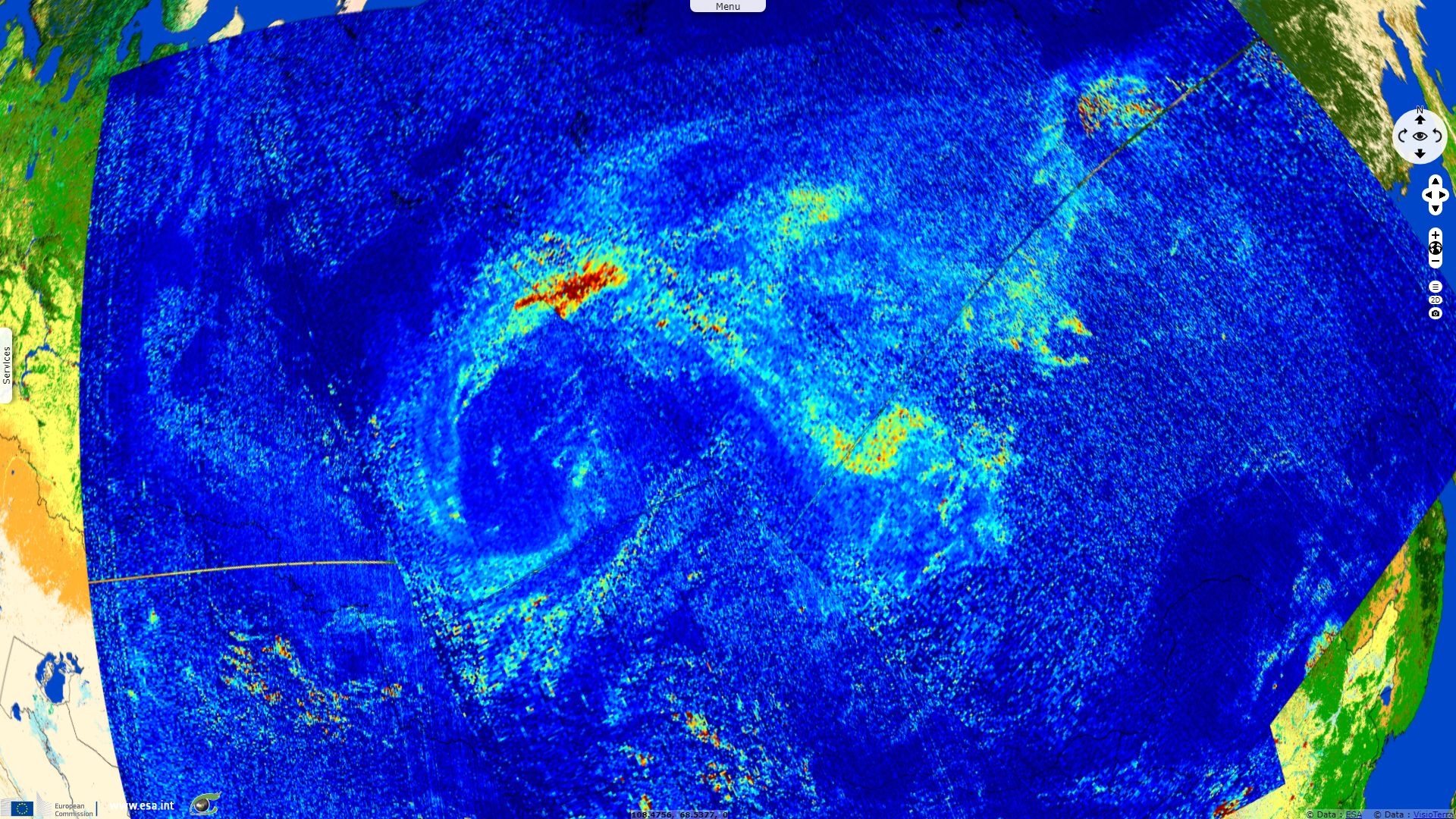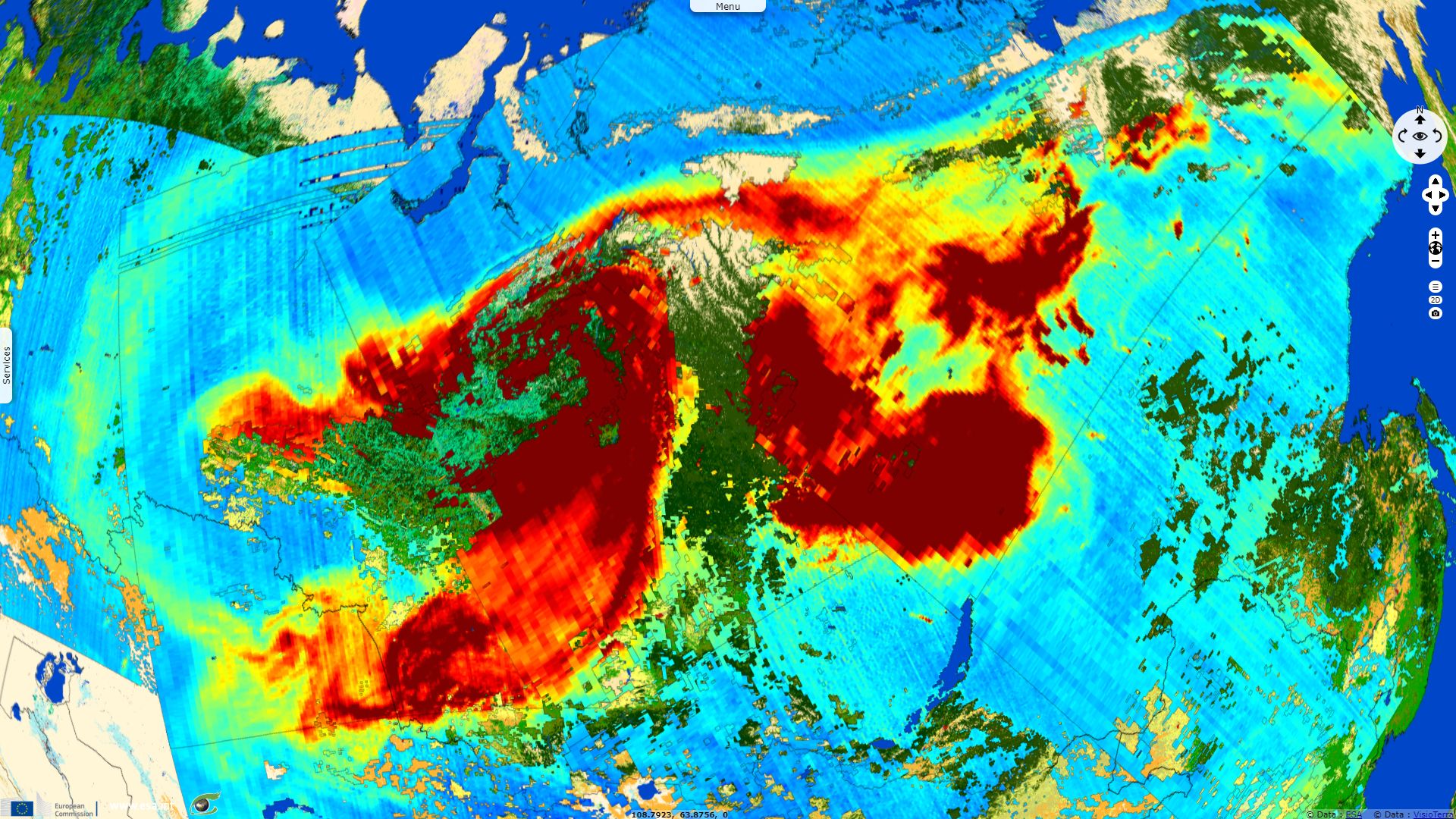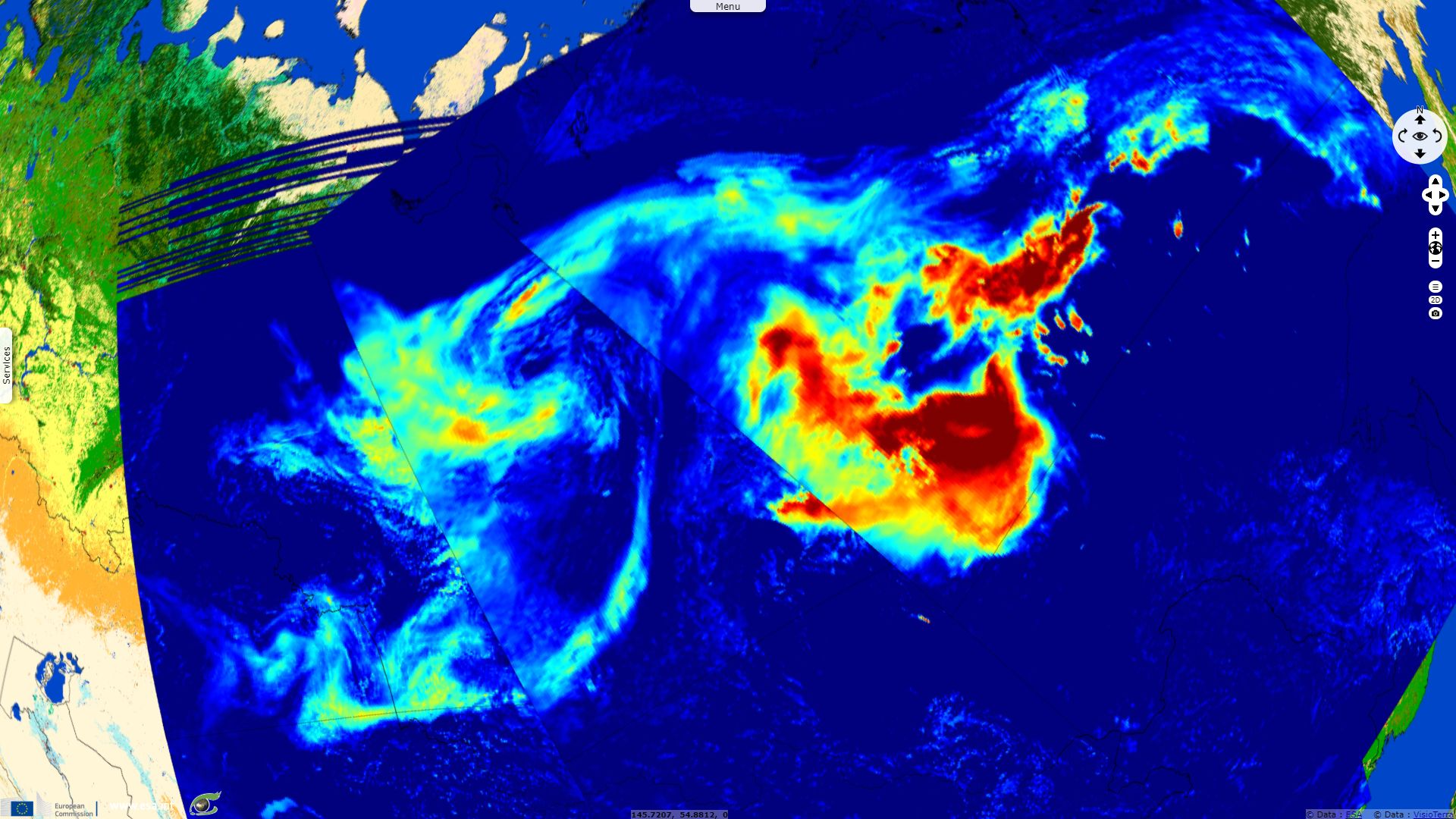Belgium-sized taiga forests wildfires suffocates Siberia
Sentinel-3 SLSTR RBT acquired on 23 July 2019 from 01:38:24 to 06:44:22 UTC
Sentinel-5P TROPOMI CO, HCHO & AER_AI acquired on 23 July 2019 from 04:23:17 to 07:48:17 UTC
...
Sentinel-3 SLSTR RBT acquired on 25 July 2019 from 02:27:01 to 05:52:00 UTC
Sentinel-5P TROPOMI CO, HCHO & AER_AI acquired on 25 July 2019 from 03:43:16 to 07:08:16 UTC
Sentinel-5P TROPOMI CO, HCHO & AER_AI acquired on 23 July 2019 from 04:23:17 to 07:48:17 UTC
...
Sentinel-3 SLSTR RBT acquired on 25 July 2019 from 02:27:01 to 05:52:00 UTC
Sentinel-5P TROPOMI CO, HCHO & AER_AI acquired on 25 July 2019 from 03:43:16 to 07:08:16 UTC
Keyword(s): Atmosphere, land, forestry, emergency, wildfire, disaster, greenhouse gas, pollution, wildlife, Siberia, Russia.
Anna Liesowska published in the Siberian Times an article relative to the huge wildfires devastation Siberia on 26.07.2019: "Some 784 931 hectares of wildfires are raging on permafrost zones including the Arctic in Yakutia - officially Sakha Republic - and the Khanty-Mansi autonomous region, causing possibly irreparable damage to the tundra. Other infernos are sweeping through boreal forests which are known as the lungs of the Northern Hemisphere. Here, centuries-old cedar, pine and larch trees are turn to ashes." "The worst-hit regions are Krasnoyarsk, Yakutia and Irkutsk in a summer fire season seen as worse than recent years in the spread and intensity of the infernos."
On 30.07.2019, Deutsche Welle updated the area of the surface scorched: : "An area of 3.2 million hectares was engulfed by forest fires in remote regions of Russia on 29.07.2019. In comparison, the total surface of the nation of Belgium is 3.07 million hectares."
"Siberia regularly faces immense wildfires, but the impact this year had been boosted by strong wind and unusually dry weather. The blazes have been allowed to spread as cash-strapped local authorities usually ignore fires in remote regions. Separately, the region's officials said that cost of the firefighting effort is sometimes 'ten times larger than the possible damage' cause by the fire."


Some 492 750 ha of forests are ablaze in Krasnoyarsk region and some 217 418 ha are burning in Irkutsk region - Source: The Siberian Times.
"But an unnamed emergency pilot slammed the calculation as 'absurd.' 'Of course, now, probably it will be expensive to extinguish everything that burns,' he said. 'But why was there no order to fly out earlier, when the fire had just begun to spread?'"
An official brought into the light another difficulty in The Siberian Times: "The problems of tackling remote fires was also highlighted in Irkutsk region. Alexander Agafonov, an advisor to Rosleskhoz, said: ‘Look, the nearest base is 500 km from the fire in the taiga.’ A plane ’back and forth, drops a small amount of water. We will be ruined if we use aviation for such purposes.’"
The article goes further, addressing the topic of health hazards: "Smoke is reaching both Novosibirsk and Ekaterinburg, Russian’s third and fourth cities by population. Novosibirsk along with Tomsk and Kemerovo are covered with the smoke for the fifth day in succession. In the later part of this week, the situation worsened. Cardiologist at Novosibirsk City Hospital No. 1, Irina Pankova, said the number of people complaining of headaches, high blood pressure and problems with breathing, has significantly risen."
"In Krasnoyarsk city, residents have been told by health officials to go outside only if really necessary. Here watchdog Rospotrebnadzor confirmed the hygienic standard in the air of the PM 2.5 particles is exceeded by between 1.2 and 2.3 times. Sensors installed by activists on Saturday showed a ‘dangerous excess of the maximum permissible concentrations’. Dust, soot and other small particles are shown as present in the air.
On Saturday morning, the MPC values ranged from 42 to 74, with the safe value of 25 units. Later the sensors showed readings from 221 to 344." published The Siberian Times in another article.
On 26.07.2019, the Moscow Times reminds: "President Vladimir Putin’s envoy in Siberia said on 25.07.2019 that there was no need to declare an emergency unless carbon monoxide concentration exceeds allowable limits."
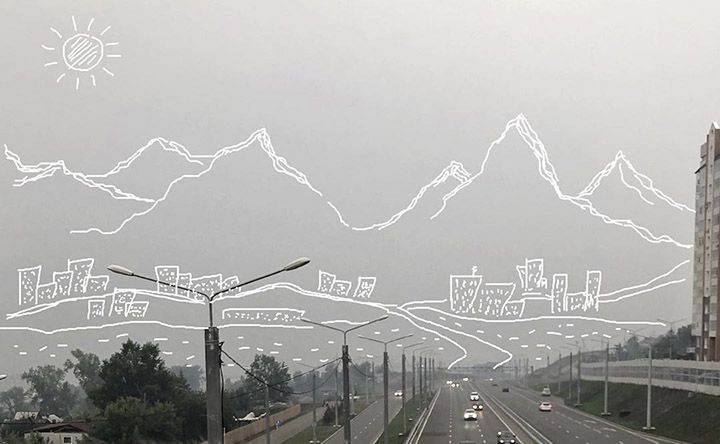
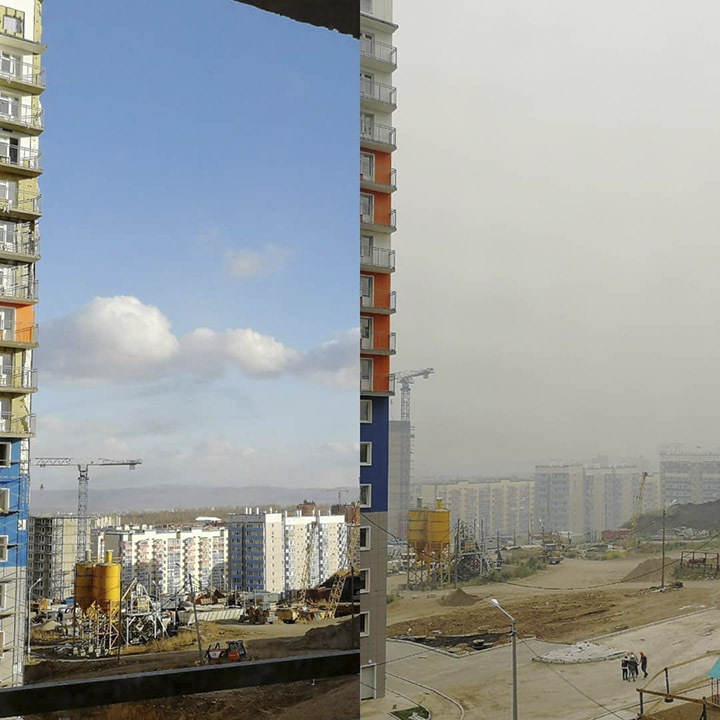


Left: Locals in Krasnoyarsk came up with the idea to draw the desirable landscape on the smoky pics - Source: @anytka_and_sem.
Right: Sensors installed by activists showed a ‘dangerous excess of the maximum permissible concentrations’ - Source: The Siberian Times.
Deutsche Welle reports: "The Russian charter of Greenpeace had launched a petition to force the government to move against wildfires in Siberia, which was signed by over 1 000 000. The wildfires 'have long stopped being a local problem' and have 'transformed into an ecological disaster with consequences for the entire country,' Greenpeace said."
Upon widespread demand of the local population, Russia finally declared emergency on 30.07.2019. Two day later, RIA Novosti relates: "US President Donald Trump, in a telephone conversation with Vladimir Putin, offered help in extinguishing fires in Siberia".
Greenpeace published a report assessing the origin of the wildfires that spread accross Siberia in 2018, according to it: "Wildfires that ravaged millions of hectares of land and forests in Russia last year may have been caused by so-called 'prescribed burning' – a controversial practice intended to prevent the spread of forest fire. That’s according to a new analysis of 2018’s Siberian wildfires carried out by GIS specialists at Greenpeace’s Global Mapping Hub, who found that the overwhelming majority of those fires started close to places where people travel, work or live, or to sites of deliberate ‘prescribed burnings’. Across the four regions studied the proportion of fires fitting into this category ranged from 65% in Krasnoyarsk Krai to 99% in Amur Oblast."
